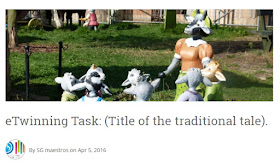Continuamos hoy trabajando estrategias que nos hagan conocernos mejor y por lo tanto avanzar en el hecho de aprender juntos, de nuestro APRENDIZAJE COOPERATIVO.
Hoy lo vamos hacer usando una dinámica que conocemos como: ¿Quiénes somos? Con ella pretendemos aumentar el conocimiento personal que tenéis de vuestros compañeros, así como ayudaros a valorar y escuchar las ideas de los compañeros.
PASOS A SEGUIR:
PASOS A SEGUIR:
PASO 1: Trabajaremos todos sentados en el suelo en gran círculo, cuanto más se vean las caras mucho mejor.
PASO 2: El profesor irá realizando una serie de afirmaciones acerca de ciertas experiencias de vida y los alumnos. Aquellos alumnos que consideren que han vivido dicha experiencia levantarán la mano, se concederá un segundo para que todos se fijen en quién sí y quién no.
Pueden utilizarse alguna de las siguientes afirmaciones (no han de ser todas).
PASO 4: El profesor irá preguntando de forma diversa acerca de alguna de las situaciones y de las personas, el resto podrá contestar aleatoriamente.
- ¿Recuerdas alguno de los alumnos que haya ido de campamentos o colonias?
- ¿Recuerdas alguno de los compañeros que haya ganado una medalla?
- ¿Recuerdas alguno de los alumnos que tenga perro o gato?
- .........
PASO 5: Los alumnos se colocarán por grupos de 2 o 3. Y en ellos se les asignará alguna de las experiencias.
- Viajar en avión.
- Ir de campamentos.
- Ganar una medalla.
- Tener mascota.
- Romperse el brazo.
- A veces se enfada.
LLEGA EL MOMENTO DE PENSAR. Como todo lo que hacemos supone un aprendizaje y tiene que generar una reflexión. Para ayudarte a ello te pedimos que vuelvas sobre tu DIARIO DE APRENDIZAJE para llevar a cabo la siguiente RUTINA DE APRENDIZAJE contestando las siguientes preguntas:







